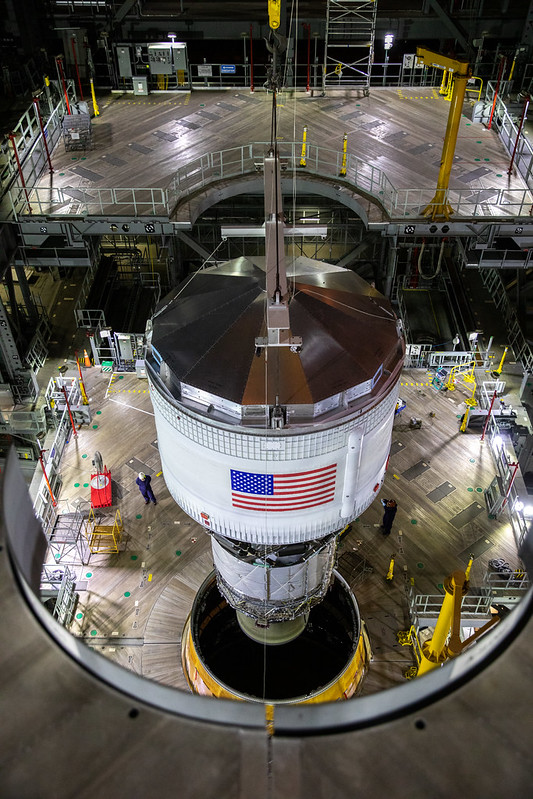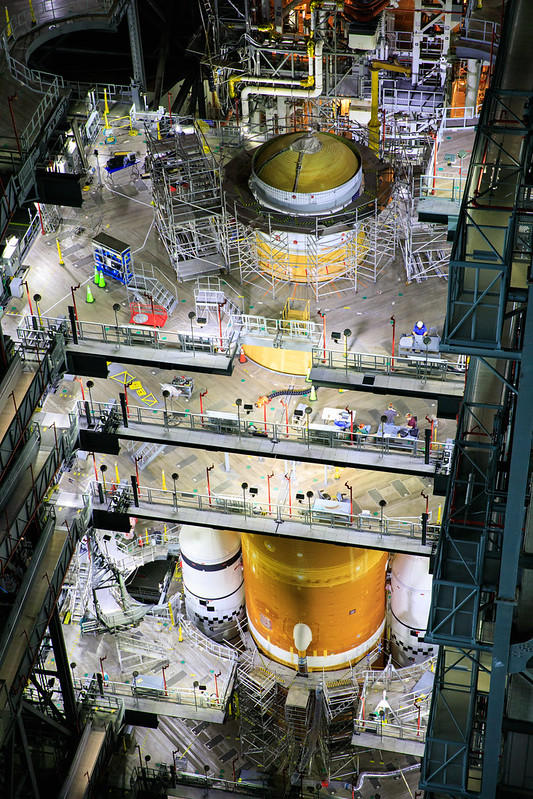At NASA’s Kennedy Space Center in Florida, Kennedy, things are ramping up for the Artemis I launch. After it successful test, the Space Launch Systems main stage arrived by barge at the launch complex.
And were moved to the Vertical Assembly Building.
The size of this building and the huge rocket booster is hard to convey in pictures, but these humans for scale should give an impression.
The solid rocket boosters were already waiting for the main stage upright at the Vertical Assembly Building:
The main stage was pulled upright and delicately lowered down to complete the SLS rocket.
Next the Interim Cryogenic Propulsion Stage was lowered onto the top of the main stage. This module will provide the boost from Earth orbit to the Moon.
With the rocket looking ready, the payload – Orion – was getting ready to be placed on top.
Orion was placed in its protective fairing covers and the European Service Module completed fuelling on 1 April, after which the system was serviced in high pressure helium that serves as a pressurisation agent to the European Service Module propellant tanks, ensuring the correct pressure at the engine inlets.
The complete spacecraft moved to the Launch Abort System Facility.
In that package is the Orion spacecraft consists of the NASA’s Crew Module, Crew Module Adapter and ESA’s European Service Module. Together these modules will power the spacecraft around the Moon and back. Over 30 engines, four solar wings, 8.6 tons of propellant and 11 km of cables are inside. For the first Artemis mission they will work in harmony to travel from Earth to the Moon, make two flybys and return.
For the European Service Module this is just another small step on its way to the Moon. With parts made in ten countries in Europe and assembled in Bremen, Germany, the complete module was flown to Kennedy Space Center at the end of 2018 to be integrated with the crew module.
The spacecraft is now being integrated with the launch abort system. This module placed on top kicks in if an anomaly occurs during launch and will propel astronauts to safety away from the rocket.










 Automated Transfer Vehicle page
Automated Transfer Vehicle page ATV blog archive
ATV blog archive
Discussion: no comments